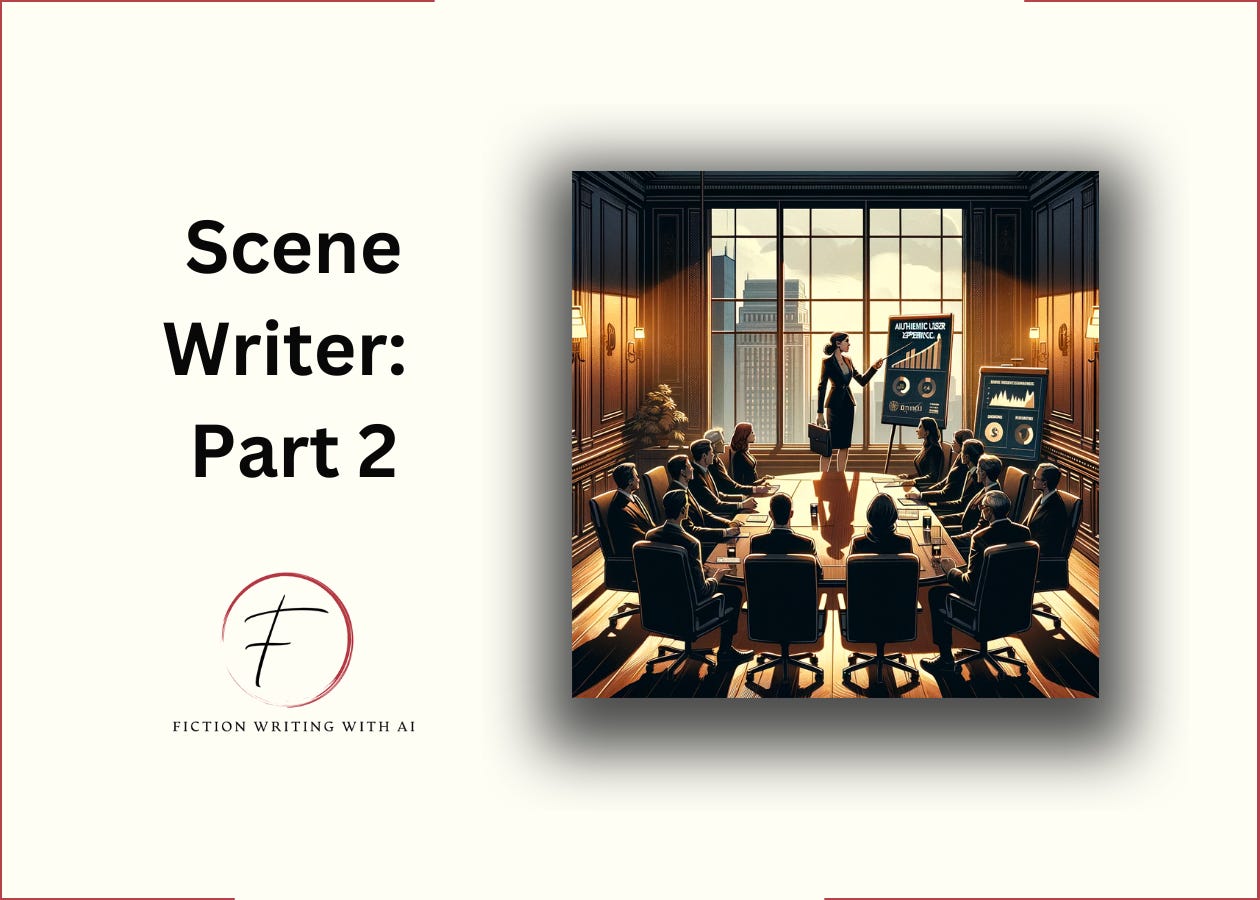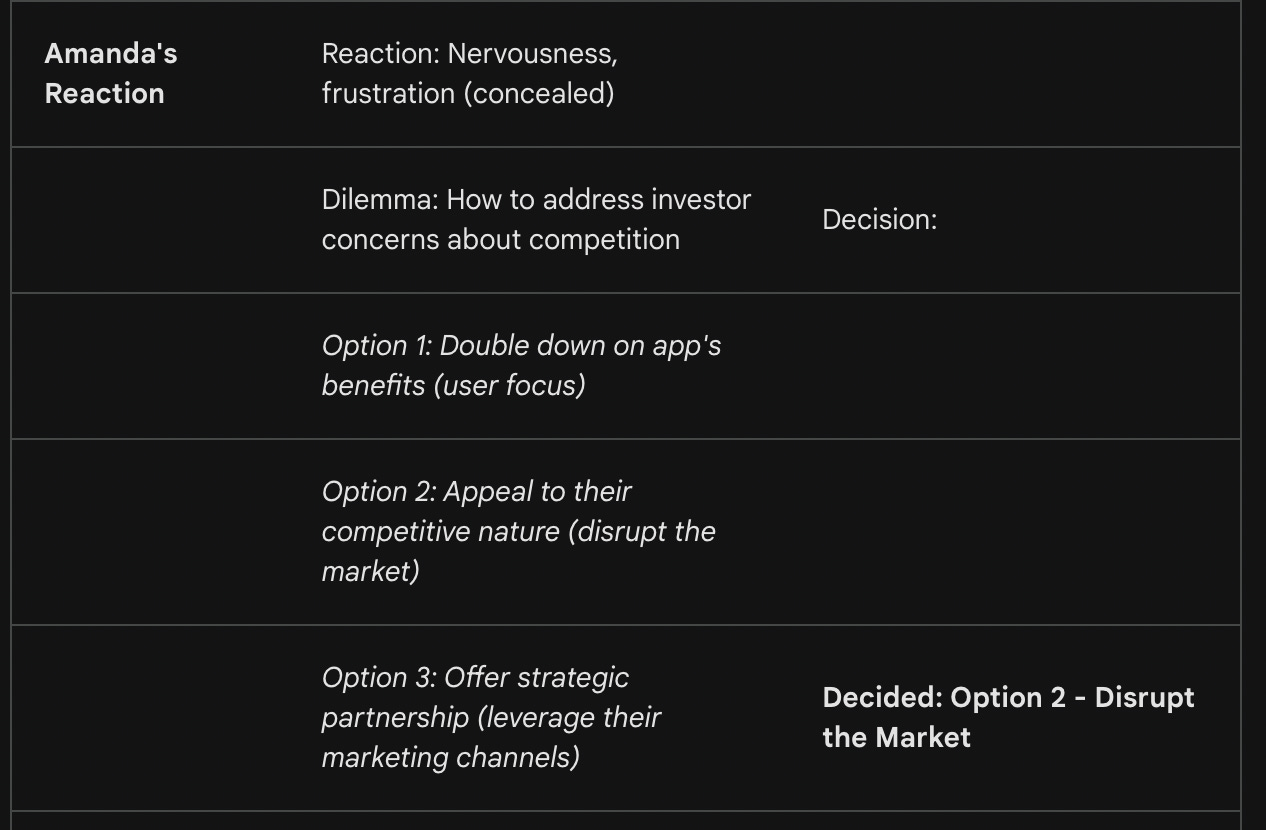Scene Action-Reaction Chart: How To Write A Sequel With AI
Hey there!
When it comes to writing fiction, it's easy to get sucked into the conflict
But what happens after the dust settles?
That's where sequels come in. These quieter parts of a scene follow the drama and are critical to character development and narrative flow. Without them, your story risks stalling out.
So how do you write compelling sequels that captivate readers?
You need 3 simple parts.
Part 1: The Reaction
The first part of a sequel is the reaction.
It’s how the protagonist emotionally responds and processes the conflict.
A scene will fail without an emotional sequel from the protagonist. And their response must fit both the conflict and the character. For example, if the protagonist's child was just injured in an attack, reactions like despair, anguish, or fury would make sense. But, emotions like joy or pride would not.
You can portray emotion through description of facial expressions, body language, internal monologue, and dialogue if other characters are present.
And if you’re stuck, think about how you would react in the same situation.
Part 2: The Dilemma
After the initial emotional reaction, your protagonist's intellect kicks in as they process what just happened.
This analysis begins with a specific question. For example, if the protagonist's car broke down, the question could be "How can I afford to get my car fixed?" If the protagonist lost his job, the question might be "How can I pay for rent and groceries without a steady income?" The question should be concrete and narrowly focused on the hurdle arising from that particular disaster. Broad questions like "What do I do now?" fail to laser in on the exact issue to be resolved.
Formulating the dilemma as a question helps the protagonist and the reader define the core problem.
Once the questions is clear, then the protagonist must think through the options, weighing pros and cons, and narrowing down the possibilities to resolve the conflict.
What allies could help?
What resources are available to employ?
What risks or sacrifices might be required?
“Planning” is what leads to the decision that drives the narrative forward.
You should aim for a solutions list of 2-4 solid, credible options.
This gives clarity while still providing flexibility on the ultimate decision. Too many loosely defined plans muddy the waters, while a single obvious solution diminishes tension and surprises.
Enough planning for the protagonist to weigh multiple paths keeps readers guessing the final choice.
Part 3: The Decision
The final piece in a sequel is the decision.
The decision marks the transition from reaction to action. It demonstrates that the character is ready to move forward and address the conflict. Even if the initial decision is flawed or incomplete, it gets the story progressing again.
For example, if the main character lost their job in the disaster scene, the dilemma may be how to earn money to pay bills. After reviewing options like finding a new job, borrowing from friends, or dipping into savings, the decision could be to update their resume and send it out to local employers that same day.
The next action scene will show the results of this crucial decision.
Avoid vague decisions like "I'll figure this out eventually" which don't provide a tangible next step. The bolder and more specific the decision, the more exciting it will be to see it play out in the following scenes. This hands the protagonist agency again and empowers them to take control of the plot going forward.
The sequel ends when a decision is made about how to tackle the dilemma.
That’s it!
All three parts can happen in a single sentence or over the course of many chapters. They may be implied or they may be mixed in with the action.
But without them the progression in your story will either stall or you’ll burn the reader out by never given them a chance to catch their breath.
Now, since this is Fiction Writing With AI, we created a prompt to help you with the process.
Generate A Scene Action-Reaction Chart With AI
In this prompt we help you write the sequel to your scene and then build a complete breakdown of the actions and reactions for your scene in a simple chart.
To get started you need a description of your scene. Think about the characters involved, the obstacle(s) in their way, and the possible outcome, positive or negative. This will gave AI enough information to build a sequel for you.
For example:
Scene: Amanda is pitching a social app to potential investors at a startup funding event.
Protagonist: Amanda is a young entrepreneur who has sacrificed everything to build her tech startup. Her goal is to secure the funding she desperately needs to launch her app.
Goal/Intention: Persuade the investors that her app idea could be wildly successful and profitable based on the market research she conducted. She needs them to commit $500k in seed funding.
Obstacle: The investors are skeptical that Amanda and her small team can compete with tech giants dominating social media. They grill her on the business plan details.
Possible Outcomes Success: Amanda confidently addresses all of the investors' questions and concerns. Her passion for the viral potential of the app shines through. The investors decide to fund $500k to launch a beta product.
Failure: Amanda stumbles on the tough marketing questions and growth projections. She fails to convince the investors on her team's capabilities. She leaves without getting any funding commitment.*
Once you have your scene details ready, then run the below script.
For the example, we chose to use Google’s Gemini (formerly Bard). Gemini is like ChatGPT, but we’ve found it to generate with more creative flair, which is perfect for fiction. Another benefit to writing with Gemini is it creates multiple drafts for you to choose from with each prompt. ChatGPT used to do this too, but the feature has disappeared.
After you run the prompt, Gemini will ask you for your scene details.
Prompt: Scene Sequel Generator
Keep reading with a 7-day free trial
Subscribe to Fiction Writing With AI to keep reading this post and get 7 days of free access to the full post archives.





